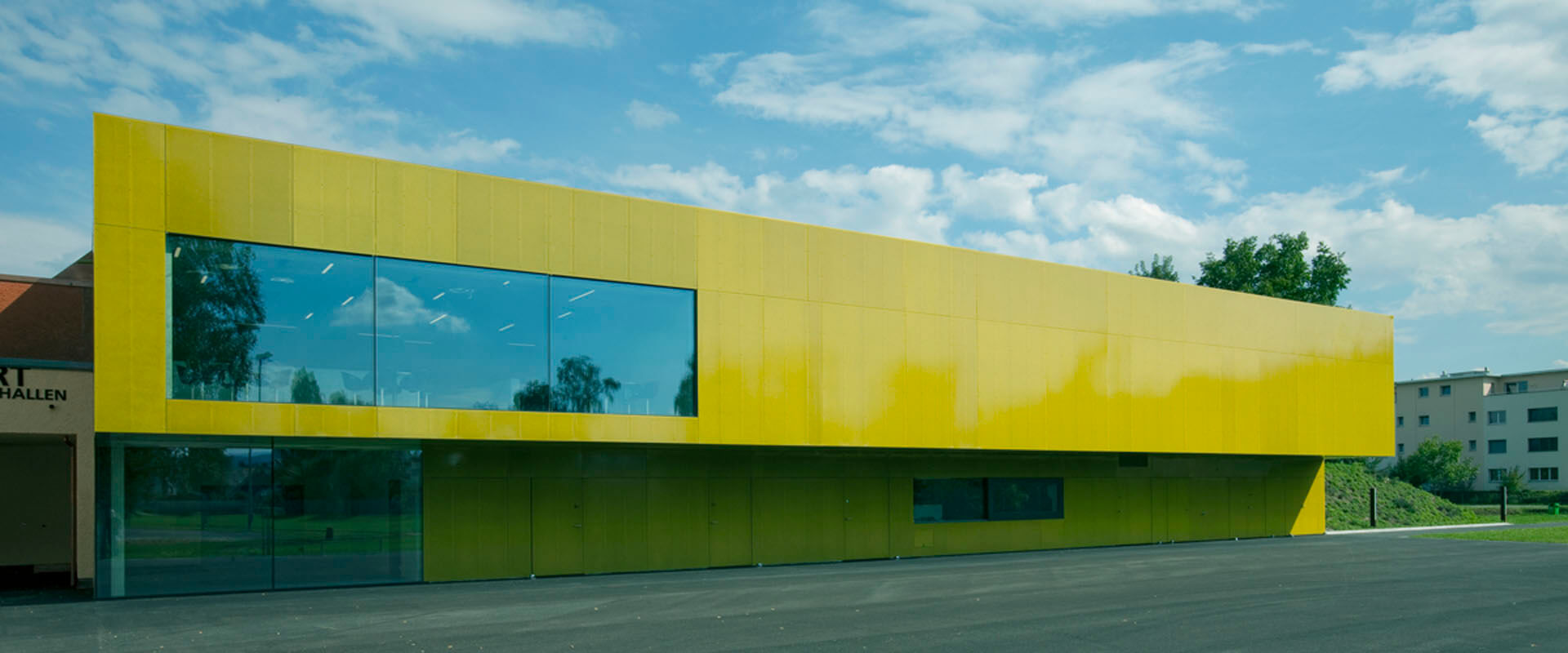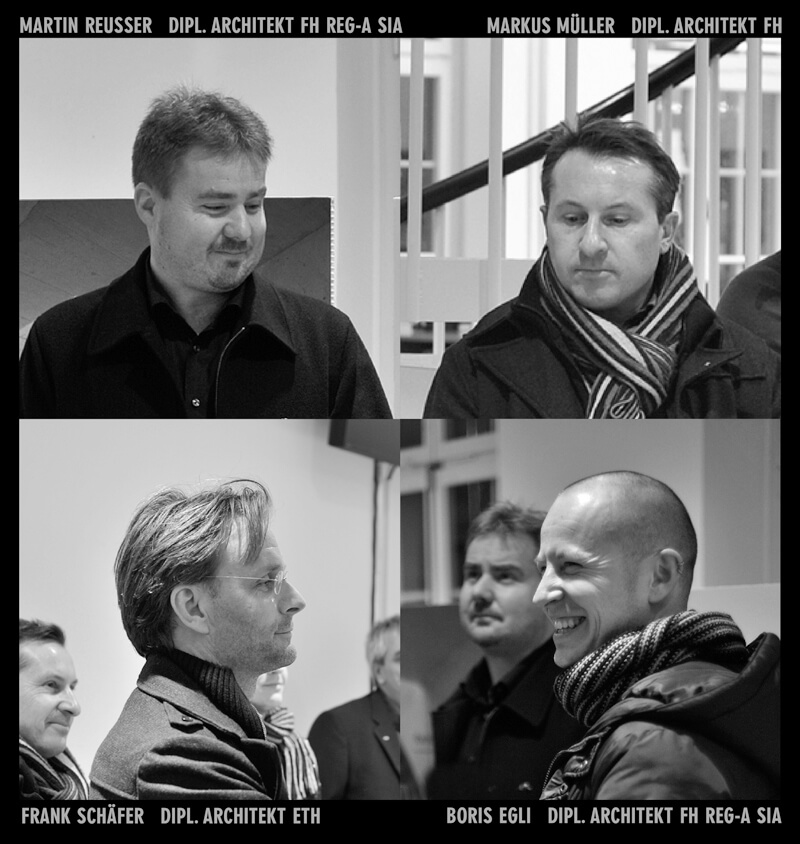
The Round and the Square
Eichi Niederglatt school centre sports hall
Architecture and aesthetics
The existing school centre Eichi in the Swiss municipality of Niederglatt (canton of Zurich) captivates with its composition and the unembellished interplay of simple cubes. The coarse plaster used in the façades and its different warm tones shine in combination with the incidence and intensity of light.
The centre was built in 1985 by the architect Walter Schindler. L3P added the new school building wing in 2007. In the sense of a continuation the architects saw the reuse of this facade material also for the extension building sports hall. With a new colour tone, the existing colour concept with the warm tones towards orange-redish of the whole centre of Eichi has been continued and supplemented.
Physical address
8172 Niederglatt ZH
Switzerland
Date of completion
2010
Interior views
Project
The multi-purpose double sports hall forms the architectural conclusion of the school complex to the southwest. The inner structure consists of a two-storey, serving spatial layer on the west side and the hall adjoining to the east. The platform is arranged on the long side of the new gymnasium extension.
The new, two-storey foyer is oriented towards the outdoor sports field and has been generously glazed. Toilets, office and outdoor equipment room are located on the ground floor and are also accessible from the outside. The cloakrooms and showers are located on the upper floor and can be accessed via a corridor which is open to the hall and can also be used as a spectator gallery.
From a fire protection point of view, the hall and new entrances are designed as one fire compartment. This allows for an extremely variable use — just as the name “multipurpose hall” demands. All areas are directly evacuated to the outside. On the upper floor, a second corridor layer allows escape to the south. At the same time, the possibility of separation brings an additional benefit to the cloakrooms for artists in theatres, which are directly connected to the stage via an internal staircase. Another advantage of the preceding room layer is the resulting intimacy for the users of the cloakroom.
Architect
Unterburg 33
8158 Regensberg
Switzerland
Team
Martin Reusser dipl. Arch. FH Reg A SIA; Boris Egli dipl. Arch. FH Reg A SIA; Markus Müller dipl. Arch. FH
User
Niederhasli Niederglatt
Client
Grafschaftstrasse 55
8172 Niederglatt
Switzerland

L3P Architects
Regensberg
Develop — Design — Model — Question — Modify — Detail — Refine
These steps accompany us every day and are the basis and motivation of our work. All these facets make our profession a vocation.
Together with our clients or as a general contractor, we develop sustainable concepts and buildings. This includes the responsible use of valuable soil and resources.
Space, proportions, materiality, colourfulness, lighting and light direction are parameters which are developed and developed further according to the object until a WHOLE is created.
Development and design
The existing access road from the Rütiwiesenstrasse was extended and asphalted.
The accessibility of the new multi-purpose hall is regulated as follows:
- Clubs and pupils use the new entrance on the ground floor, which is opposite the exit of the classroom wing.
- In the evening and during the week, club members have the opportunity to park their vehicles in the supply area office and stage.
- When used as a multi-purpose hall, the public access is via the existing foyer, which is optimally accessed via the school square and the nearby parking facilities. The foyer and the existing gymnasium were also redesigned in terms of materials, lighting and colours.
Author of text
L3P
Photographs
Vito Stallone
Statics, lighting and interior design
The extension of the old gymnasium lost its southern window surfaces. The existing north-facing oblique lights have been left. The structural design was also carried out in consultation with the responsible civil engineer, who had calculated the 1985 Gymnasium.
The aging of the concrete and the resulting higher compressive strength made it possible to cut out individual sections. For reasons of cost, the initially planned round and playfully arranged skylights had to be abandoned.
The architects designed circular recesses in the exposed concrete walls and plywood claddings as a form of creative compensation. The circle is ubiquitous in general: round mills were created in the existing concrete walls and the new walls were formed accordingly. Like bouncing balls, this creates a metaphor together with the depressions, which makes the hall spatially very attractive.
School band “Seehelden”
Killing me softly with his song

